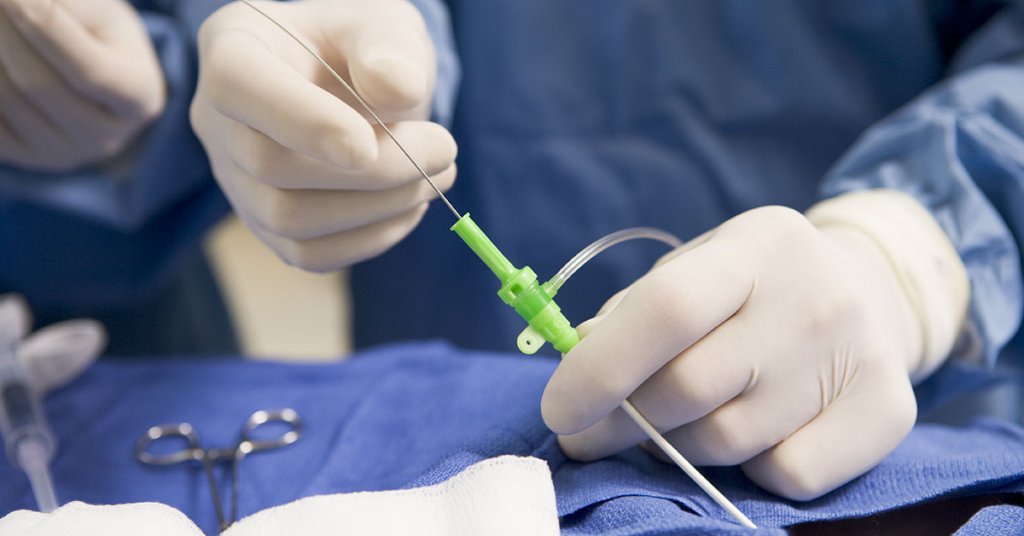What Is Vascular Embolization?

If you are experiencing the painful symptoms of a condition such as pelvic congestion syndrome or uterine fibroids, you may benefit from a type of procedure called vascular embolization. These procedures do not require you to undergo surgery and can help relieve your symptoms.
What Is Embolization?
Embolization is a technique used to restrict or terminate blood flow in order to treat a variety of conditions. Vascular embolization is performed by a specialist called an interventional radiologist (IR). The IR uses a long, thin tube called a catheter to inject medicines or other materials into blood vessels to seal them. Vascular embolization is minimally invasive and done on an outpatient basis.
What Conditions Is Vascular Embolization Used to Treat?
Pelvic Congestion Syndrome
Pelvic congestion syndrome (PCS) is a condition that causes chronic pelvic pain and other related symptoms. The condition is caused by varicose veins in the pelvis. Symptoms of PCS include pelvic pain, stress incontinence, a dragging sensation in the pelvis, and a feeling of fullness in the legs.
Pelvic vein embolization is a type of vascular embolization and is the most common and effective treatment for pelvic congestion syndrome. The procedure is performed in an outpatient setting and uses local anesthetic and mild sedation so the patient does require general anesthesia. During the procedure, the doctor inserts a catheter into the enlarged pelvic vein and uses it to insert coils into the vein. A solution called a “sclerosing agent” is also injected into the vein to help seal it. This cuts off the blood flow to that vein and alleviates symptoms.
Genicular Artery Embolization
Genicular Artery Embolization (GAE) is a minimally invasive procedure that relieves chronic knee pain caused by osteoarthritis without the need for surgery. By targeting the small arteries that supply blood to the inflamed lining of the knee, GAE reduces inflammation and provides long-lasting pain relief. It’s an ideal option for patients who haven’t found success with conservative treatments and want to delay or avoid knee replacement. Preferred Vascular Group offers GAE procedures in Cleveland and Atlanta, helping patients return to daily activities with less pain and faster recovery.
Uterine Fibroids
Uterine fibroids are noncancerous tumors that grow in the wall of the uterus. Fibroids are very common and many women do not even know they have them. According to the Office on Women’s Health, up to 80% of women will develop fibroids by the time they reach 50. Not all women who have fibroids experience symptoms, so fibroids do not always need to be treated. But in some cases, fibroids can cause heavy bleeding, painful periods, painful sex, frequent urination, lower back pain, and reproductive problems like infertility.
In cases where fibroids are causing severe and painful symptoms, uterine fibroid embolization (UFE) can be used to treat them. Like other embolization procedures, UFE is performed by an interventional radiologist. The IR inserts a catheter into the upper thigh or wrist and injects tiny round beads through the catheter into the blood vessels feeding the fibroid. When the blood supply is cut off, the fibroid shrinks and symptoms are alleviated.
Vascular Malformations
Vascular malformations are blood vessels that have formed abnormally. Some vascular malformations cause functional problems while others are only cosmetic issues. Types of vascular malformations include:
- Venous malformations
- Arteriovenous malformations
- Hemangiomas
- Pulmonary arteriovenous malformations
Vascular embolization procedures may be used to decrease the size of these malformations, relieve pain, or block abnormal connections between vessels.
Other Conditions
Embolization may be used to stop bleeding related to other conditions in different fields of medicine such as gastroenterology or trauma surgery. It may also be used to cut off the blood supply to tumors and aneurysms to prevent a future injury. While specialists that treat each condition listed would be involved in treatment, interventional radiologists are still important in these situations.
- Bleeding caused by traumatic injury
- Aneurysms
- Gastrointestinal bleeding due to:
- Ulcers
- Lesions caused by diverticulitis
- Varicocele (enlarged veins in the scrotum that may cause infertility)
- Tumors
If you would like to schedule an appointment at Preferred Vascular Group to have a consult with a board-certified physician or would like to have one of our highly-trained care providers reach out to you, please click on a button below:
